Amidst coronavirus, I’m sticking to what I – and a lot of other people – love most: cooking and baking. One challenge I’ve presented to myself is to make a dish (or dishes) of international cuisines every week, learn some words from the language, and e-visit some of the country’s landmarks. Some of these dishes will be more complex than others, based on what ingredients I have available in the house.
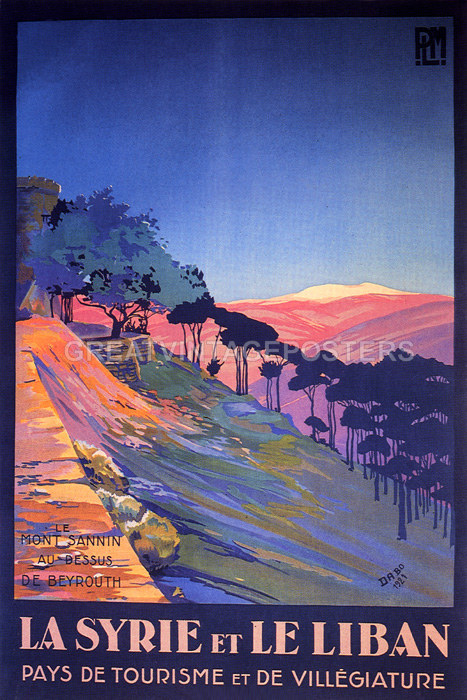
With so much free time, one of my favorite pastimes has been fanning through cookbooks, particularly those of Yotam Ottolenghi – my favorite celebrity chef. I happened to come across a lima bean mash with muhammara and decided that my next country would be Lebanon!
Lebanese cuisine is rich in garlic, olive oil, and lemon juice, and chickpeas and parsley are star ingredients. Some famous dishes with roots in Lebanon include baba ghanouj, falafel, and shawarma. Most foods are grilled, baked, or sautéed.
Meals in Lebanon can follow a mezze format, in which an array of small dishes are placed on the table and guests pick and choose what they want. A mezze can include a tabbouleh salad, hummus, and muhammara. As for desserts, baklava is a Lebanese favorite.
DISH #1: LIMA BEAN MASH WITH MUHAMMARA (GF + V)
Muhammara is a hot pepper dish made of red peppers, walnuts, breadcrumbs, olive oil, lemon juice, pomegranate molasses, salt, and garlic. This recipe in particular does not have pomegranate molasses or breadcrumbs, but other versions do.
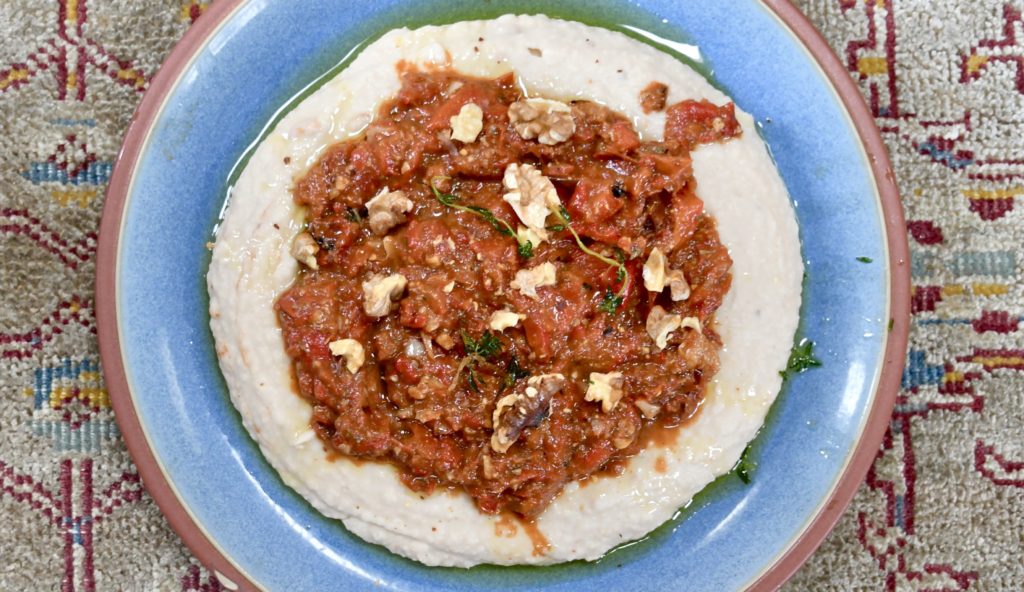
This dish was super easy to prepare and can be made up to three days in advance. I joke that if I had host a Super Bowl party for international friends, I’d put this out as a dip 🙂 What I also like about this recipe is that you can just make the muhammara, and decide to what consistency you would like to blend it. I preferred a chunkier muhammara because it went smoothly with the creamy lima bean mash. It’s totally up to you!
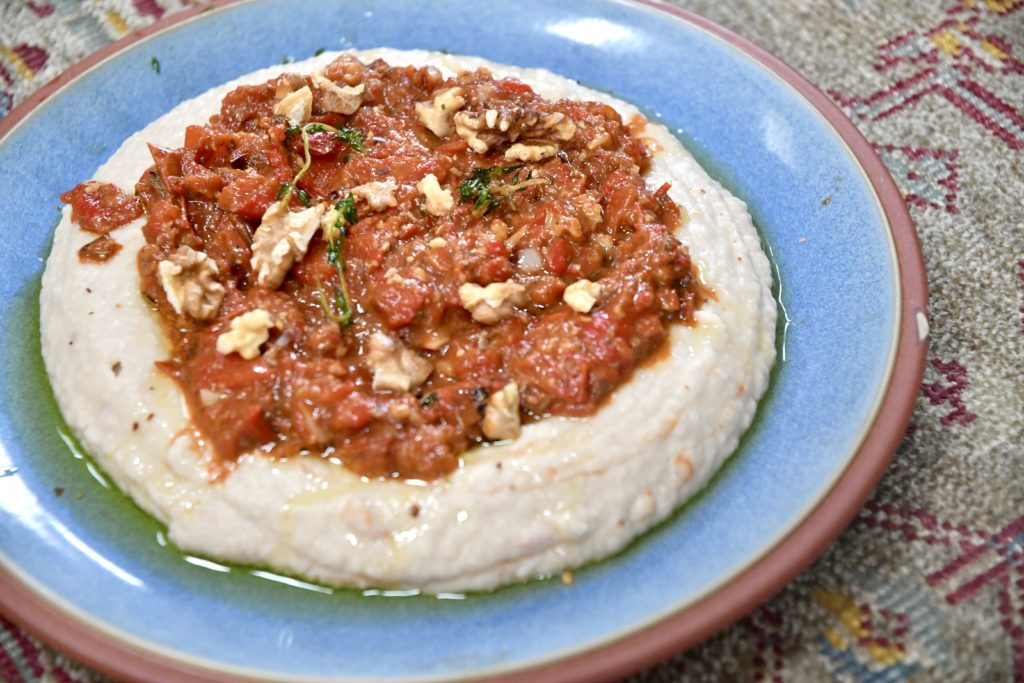
Muhammara can be spread on bread, kebabs, grilled meats, and fish.
Recipe: Ottolenghi’s butterbean mash with muhammara
DISH #2: ARNABEET MEKLEH (GF + V)
Arnabeet mekleh, or fried cauliflower, is a common Lebanese snack. Arnabeet mekleh is served with a tarator sauce, which is essentially a tahini garlic sauce. While the typical recipe calls for frying the cauliflower, I preferred baking it for health reasons. Also, baking it is easier too.
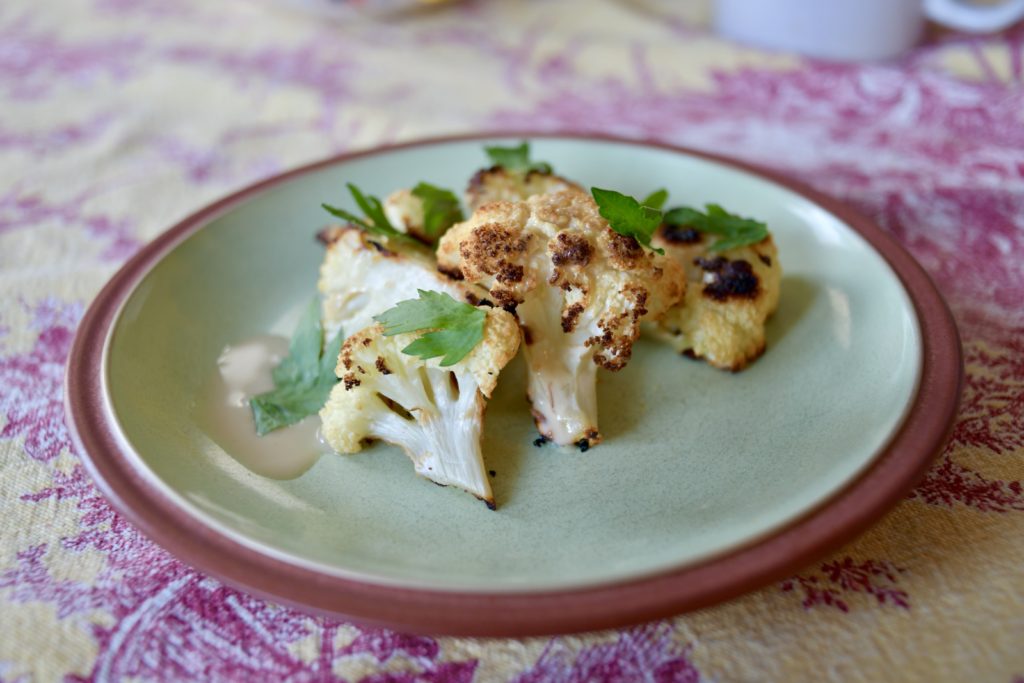
This dish is simple, delicious, and versatile. It pairs well with rice, grilled bread, and even a salad with spiced chickpeas (my favorite are Saffron Road’s falafel chickpeas).
Recipe: Cosette’s Kitchen’s Arnabeet
USEFUL WORDS
The main language in Lebanon is Arabic, with a Lebanese dialect.
Greetings
- Ahlan –> Hello
- SabaaH al-khayr –> Good morning
- RESPONSE: SabaaH an-nuur –> Morning of light
- Masaa’ al-khayr –> Good evening
- RESPONSE: Masaa’ an-nuur –> Evening of light
- Kayf Haalak? –> How are you?
- RESPONSE: Bi-khayr, al-Hamdu lillah –> Fine, praise God
- Ma’ al-salāmah –> Goodbye, with peace
- RESPONSE: Fī amān Allāh –> in God’s protection
- Wadān ‘an –> Farewell
Conversation
- Mā ismak? (male) or Mā ismik? (female) –> What’s your name?
- RESPONSE: Ismee ___ –> My name is ___
- Min ayn anta? (male) or Min ayn anti? (female) –> Where are you from?
- RESPONSE: Anā min ____ –> I’m from ___
- Motasharefon bema’refatek (male) or Motasharefatun bema’refatek (female) –> Pleased to meet you
- Shukran –> Thank you
- Madha tuhibu ‘an tafael? –> What do you like to do?
- RESPONSE: ‘Ana ‘uhibu ‘ana … –> I like to …
- Iltabakh –> to cook
- Lilraqas –> to dance
- Lilsafar –> to travel
- RESPONSE: ‘Ana ‘uhibu ‘ana … –> I like to …
LANDMARKS
Lebanon was a rather unfamiliar country to me, so I’ve enjoyed learning more about the country.
Kadisha Valley
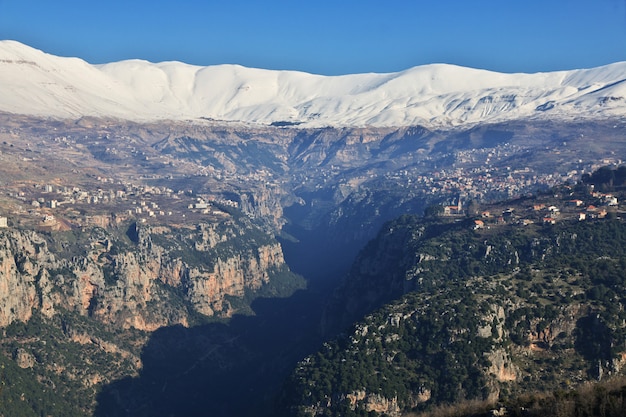
Kadisha valley is considered to be a national treasure in Lebanon, with an ancient cave monastery and beautiful hiking trails. National Geographic, of course, does a fabulous job at taking you for a closer look.
Sursock Museum, Beirut

I’m an avid museum-goer, so this modern art museum, completed in 1912, would be a must for me. In the 1960s, this museum was a go-to cultural spot, but then there was the civil war from 1975-1990 which considerably reduced the scope of the museum. Since its 12 million dollar renovation, it has been back as a top destination.
Jabal Moussa, Guhmaz

Jabal Moussa Biosphere Reserve overlooks the Mediterranean sea, and its mountainous reliefs give way to many eco-zones that promote diversity in species.
Soap Museum, Sidon

I love soaps, so going to this museum would definitely be on my to-do list if I were to go to Lebanon.
Thank you for taking this trip to Lebanon with me. Ilá al-liqā! (Until next time!)